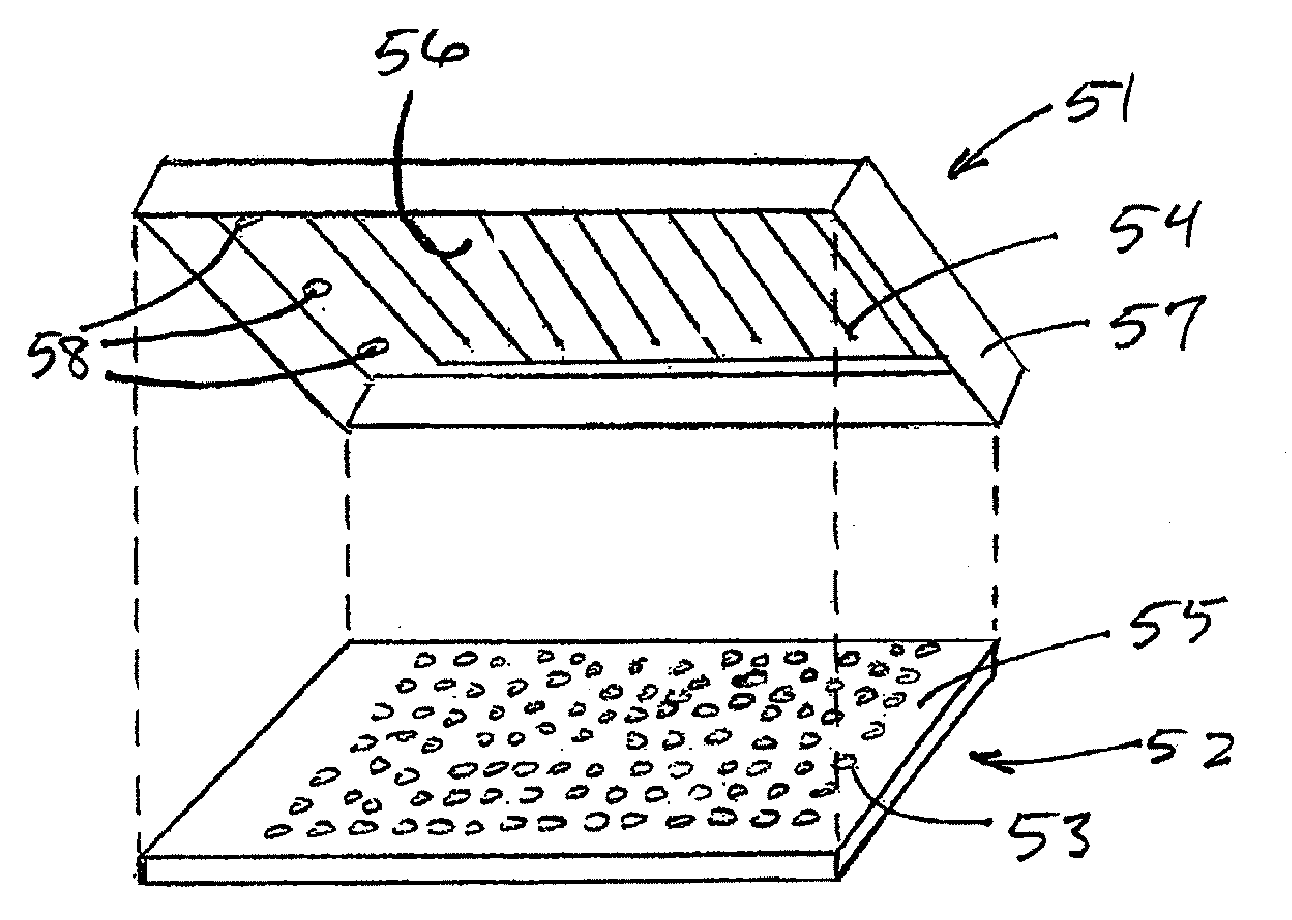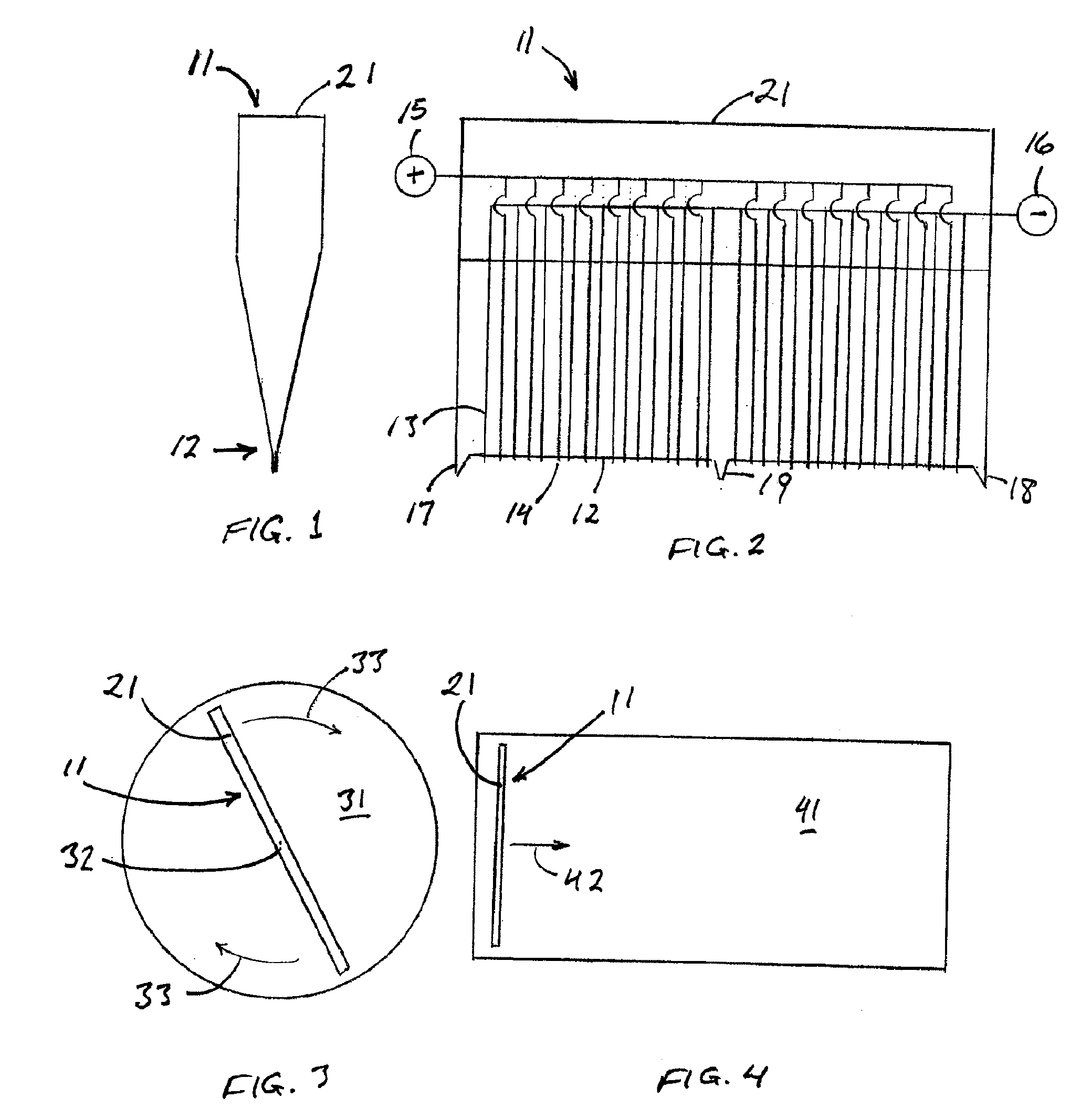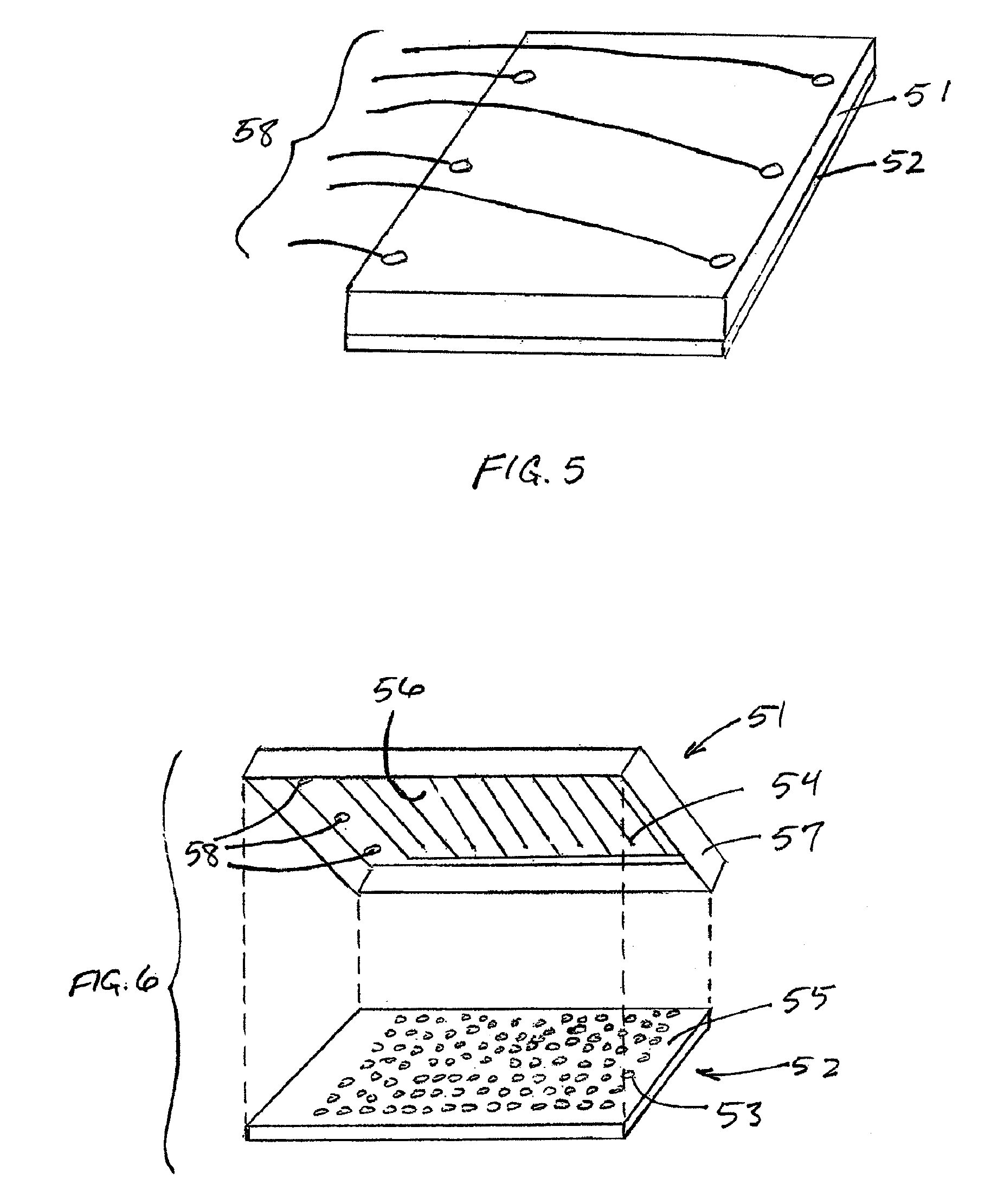Electroporation of adherent cells with an array of closely spaced electrodes
a technology of adherent cells and electrodes, applied in the field of transfection, can solve the problems of high efficiency, remain elusive, and affect the efficiency of transfection
- Summary
- Abstract
- Description
- Claims
- Application Information
AI Technical Summary
Benefits of technology
Problems solved by technology
Method used
Image
Examples
Embodiment Construction
[0028]The most typical adherent cells are biological cells that are adherent to the surface on which they are grown. The concerns that apply to such cells can also arise in the electroporation of cells that are immobilized for other purposes or that have become immobilized by other means. The present invention is thus directed to the electroporation of adherent membranous structures in general, including such structures as vesicles and liposomes in addition to cells. The terms “cell” and “biological cell” will be used herein for convenience to collectively denote all such membranous structures. Examples of the species, referred to herein as “exogenous species” or “transfecting species,” that will pass through the membranes of these cells during the electroporation, are nucleic acids including DNA, RNA, plasmids, and genes and gene fragments, and proteins, pharmaceuticals, and enzyme cofactors. Further examples of exogenous species will be apparent to those skilled in the art.
[0029]T...
PUM
 Login to View More
Login to View More Abstract
Description
Claims
Application Information
 Login to View More
Login to View More - R&D
- Intellectual Property
- Life Sciences
- Materials
- Tech Scout
- Unparalleled Data Quality
- Higher Quality Content
- 60% Fewer Hallucinations
Browse by: Latest US Patents, China's latest patents, Technical Efficacy Thesaurus, Application Domain, Technology Topic, Popular Technical Reports.
© 2025 PatSnap. All rights reserved.Legal|Privacy policy|Modern Slavery Act Transparency Statement|Sitemap|About US| Contact US: help@patsnap.com



